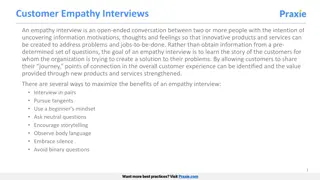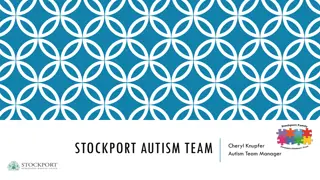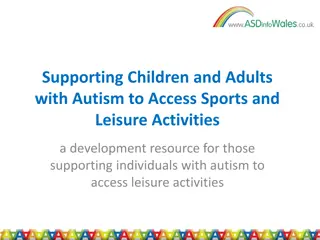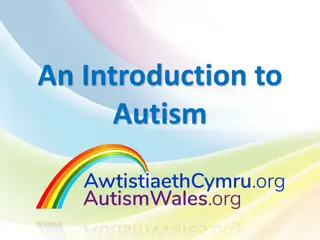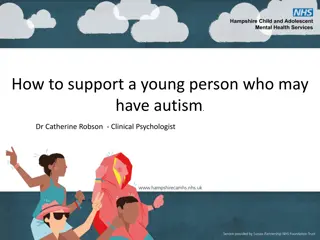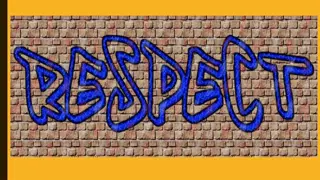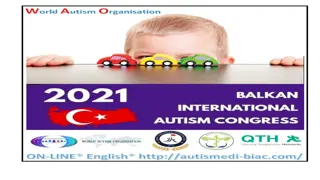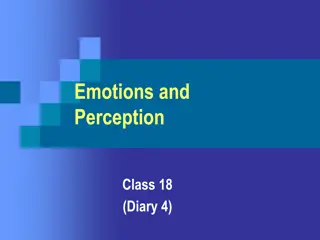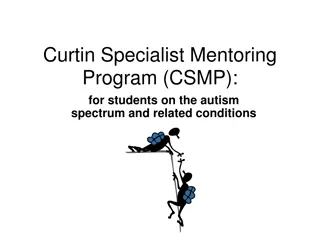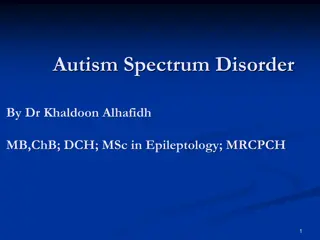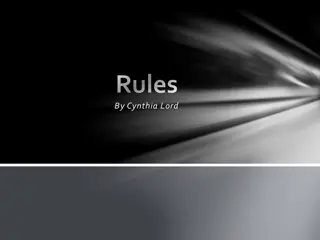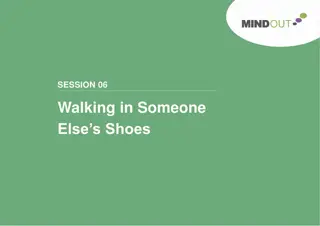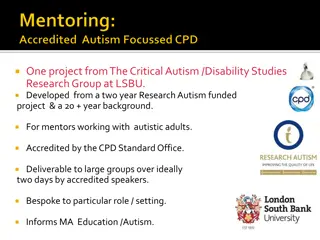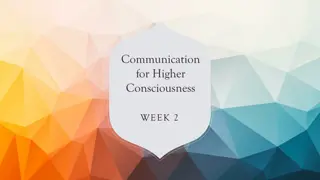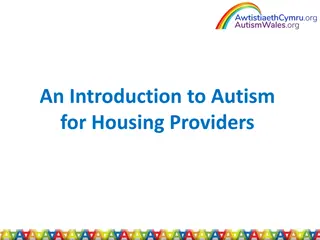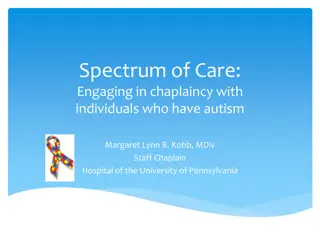Understanding Theory of Mind and Empathy in Autism
Explore the impact of Theory of Mind and empathy in individuals with autism, highlighting differences in processing information, managing anxiety, and understanding others' beliefs and emotions. Learn about the challenges faced and implications for social interactions.
Download Presentation

Please find below an Image/Link to download the presentation.
The content on the website is provided AS IS for your information and personal use only. It may not be sold, licensed, or shared on other websites without obtaining consent from the author. Download presentation by click this link. If you encounter any issues during the download, it is possible that the publisher has removed the file from their server.
E N D
Presentation Transcript
Theory of Mind and Empathy Autism Team
Processing information differently can include Processing everything ( distraction & overload) Logical, often serial processing (can be monotropic) Black and white thinking An ability to hyperfocus, What appear to be difficulties with executive functioning (e.g. sequences, processing time, organising self) Strong attention to detail but less to the whole picture (weak central coherence) Difficulties processing non autistic emotions and beliefs
Impact of anxiety on processing information.. We need to be aware that high anxiety increases this way of thinking: Serial processing, can be monotropic (tunnel vision) Black and white thinking Difficulties processing other people s emotions and beliefs
Processing everything means Harder to stay on task Harder to distinguish key information from trivial Hard not to become overloaded and exhausted Can see all sorts of information/detail others do not!
Difficulties understanding others Difficulties in instinctively guessing or just knowing what a (non autistic) child or adult believes, wants or intends (for example)
Difficulties understanding others In a class full of non-autistic peers and staff, and autistic young person can worry: What are others thinking of me? (I literally can t guess) What is he/she going to do next? ( I absolutely do not have a clue and that makes me nervous ) Are they laughing at me? ( I literally don t know ) Why are you taking the pens? (you must know I want them) Why are you angry that I have taken the pens ? (you must have known I want them)
Theory of mind? Theory of mind is said to be the ability to understand the desires, intentions and beliefs of others, and a skill that develops between 3 and 5 years of age in typically developing children.
or double empathy problem? Simply put, the theory of the double empathy problem suggests that when people with very different experiences of the world interact with one another, they will struggle to empathise with each other. Damian Milton Autistic children may find it difficult to understand the beliefs, desires, needs of the non autistic peers but equally, their non autistic peers may find it difficult to understand them. In other words, they problem is on both sides.
Communicating and socialising differently
Communicating differently Differences in: Receptive language Expressive language Use and interpretation of facial expressions When and how often eye contact is made Use and interpretation of body language Use (or not) of intonation
Processing communication Some autistic pupils will do this differently, e.g. Processing every single word in detail Processing literally (when others do not speak literally) Processing words when you think in images
Processing the social world differently The subtle science of social rules When is bluntness OK? Making and keeping friends Play how to play and what to play Saying hello and saying goodbye Rumination and social hangovers The research
Social Stories can ; give individuals some perspective on the thoughts, emotions and behaviours of others, personalise social skills for an individual, break down goals into achievable steps, teach routines, describe possible responses to actions, translate observed behaviours into social understanding address a wide variety of behaviours, including obsessions and compulsions.
Comic strip conversations: Idea of Carol Gray theory of mind and social understanding Conversation and visually based walk through of real life situations You draw as you talk to show the perspectives of each person in an interaction You start with their perspective Then add a second layer Each stage is a contrasting colour
Comic strips are useful for: Deception Ridicule Conflict resolution Communicating feelings Allows processing time Can reduces stress KEEP STRIPS, REFER BACK TO You can also use them to draw out a pupil s explanation for their behaviour in a specific situation
https://www.youtube.com/watch?v=Mnf4K38Jwp U Purple Ella Clip link above







